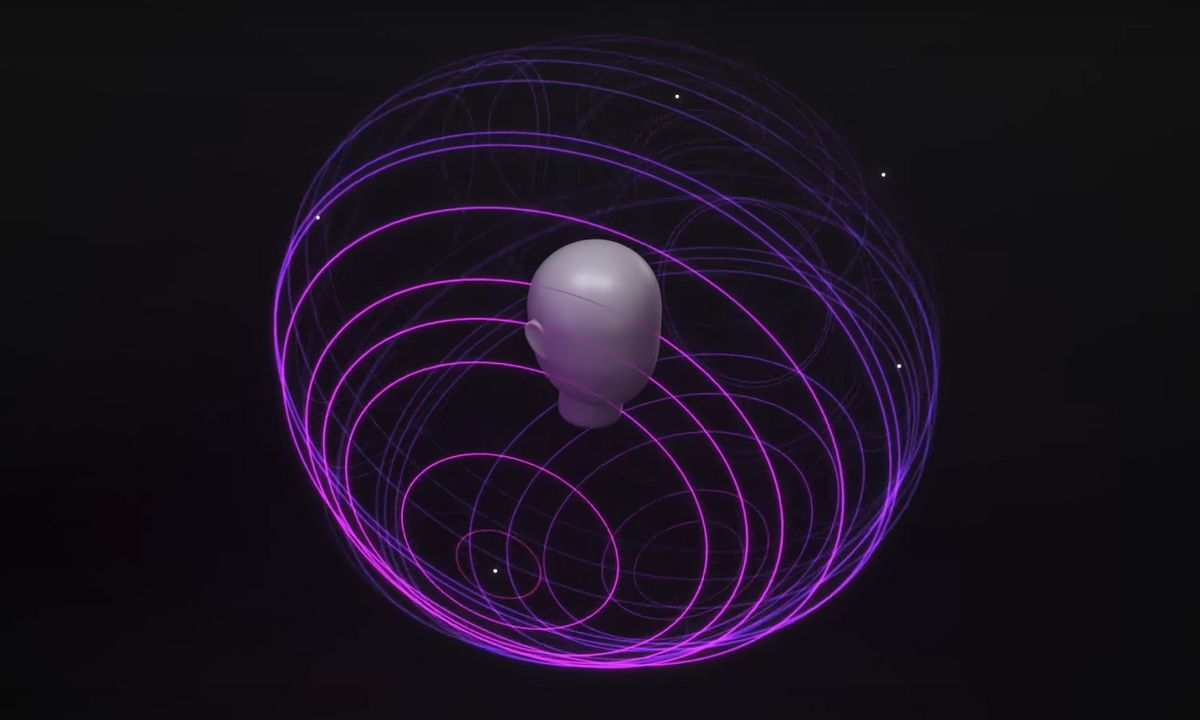Spatial audio feels like the buzzword of the moment. A technology that wants to make your music more immersive, more involving, and, ultimately, more engaging to listen to. It’s in your soundbar, it’s in the best headphones, and it’s coming to the best music streaming services. So why can’t I get behind the format?
There are loads of different spatial audio standards for music out there, from Apple Music’s creatively named ‘Spatial Audio’ to Dolby Atmos and then all the proprietary techs that manufacturers develop to pack into their products. But even then there’s been a grand total of two times that I’ve been wowed by spatial audio. The first was a product demo in a specially set up studio space, and the second was when I first plugged in my Sonos Era 300. Yet still; I just don’t get it.
The problem
I am something of a purist. I like my Victoria’s sponge cake without buttercream, my cheese sandwiches with crusts, and my music in true stereo. I find the best soundstage comes from proper separation, with two speakers firing their audio directly at my ears, so that my music is naturally wider.
Spatial audio algorithms are smart. I can’t deny the incredible programming, audio wizardry and psychoacoustic dark arts that go into spatial audio formats. I’ll admit that it’s kind of magical, and in some cases, it really does make your music sound like it’s coming from all around you. But that’s not what I want.
My aim is to get as close to the artist’s intent as possible. I want to feel like the musicians playing their music are across from me, in a studio, recording their latest album just for me. That means I want to be able to place the musicians, I want to hear their breaths, I want to feel like they’re in the room with me.
Generally, in an environment like that, the music won’t be coming from all around you. Unless they’re hanging by a string from the ceiling, the vocalist is going to be standing in front of you. The drummer is going to be in the back, banging away on his kit, as the guitarist plays just in front. Spatial audio tries to place these artists around the room, in various different spots. And that just feels weird.
The exception
In 1969, Led Zepplin released Whole Lotta Love. An eclectic track that, for the most part, sounds like the band is mucking about in the studio a meter away. But then things get weird. They start to play with the format, as sounds zoom from the left to right channel, and strange sounds and vocalizations play with the sense of space.
This was still the early days of stereo, and it saw a good few years of artists making better use of the setup. Things were experimental — they wanted to see what they could do, how they could make their music sound different. It was fun, and it allowed me to be free of my purism and enjoy the artistry at hand. As yet, spatial audio is yet to do the same.
To understand spatial audio for music, I need artists to have fun with the format. Don’t just make the band surround me, make things zoom around. Distort the drums, shift my expectations. Bring me out of the studio seat, and take me on a journey. If you want to ‘involve’ me in your music, try something different that is otherwise completely impossible with a pair of stereo speakers. Because at the moment, a proper stereo setup is much better at immersing me in my favorite tunes than spatial audio.
What can be done?
There’s an extra issue in my eyes, and that’s the state of spatial audio formats in general. Loads of them, like Marshall’s SoundStage and Bose’s Immersive Audio, don’t use the spatial mixes you find in Tidal or Apple Music. Instead, they try to ‘spatialize’ your music through clever audio trickery to make things seem more spacious. I’m not a massive fan of the idea, as I find it tends to thin out the sound rather than making it feel beefier.
Then there are different versions of spatial audio depending on the headphones or streaming you’re using. Sony’s 360 reality audio only works with some streamers, Tidal’s Dolby Atmos only works with some headphones, and Apple Music’s Spatial Audio only sounds its best with AirPods or HomePods.
Getting into spatial audio is harder than it should be. Lower the barrier of entry and things might get better, and make it easier to understand what it all means. I sure don’t, and I live and breathe audio and HiFi.
I want to love spatial audio. For movies it’s great, surrounding me with the soundtrack and sound effects of my favorite movies, but for music, it’s just not there yet. Have fun with spatial mixes, artists. Give me experiences I can only have with spatial audio that are engaging. And manufacturers, make it all easier to understand. Make it easier to play spatial audio content on my headphones or speakers, and maybe I’ll start to get it.
No promises though.
More from Tom’s Guide
Source link
